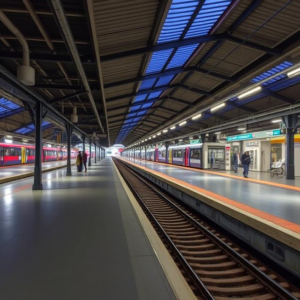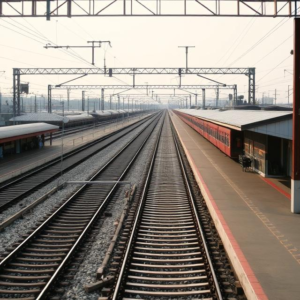Railway station redevelopment projects are efforts aimed at improving and modernizing existing railway stations to make them more efficient, accessible, and comfortable for passengers. These projects typically focus on upgrading both the infrastructure and facilities at stations.
Here’s a simple breakdown of what these projects usually involve:
1. Modernizing Infrastructure
- New Buildings: Old stations may be torn down or renovated to build modern, better-equipped structures.
- Platform Improvements: Platforms might be widened or rebuilt to accommodate more trains and passengers. This includes ensuring platforms are accessible, especially for people with disabilities.
- More Tracks: Additional tracks may be laid to allow more trains to pass through the station, increasing capacity.

2. Enhanced Passenger Facilities
- Waiting Areas: More comfortable waiting areas with better seating, air conditioning, and cleanliness.
- Clean Restrooms: Modern, hygienic restrooms for passengers.
- Food Courts and Shops: More variety in food options and shopping facilities inside stations.
- Wi-Fi and Charging Stations: Many redevelopment projects add free Wi-Fi and charging points for passengers’ devices.
3. Better Connectivity
- Improved Transport Links: Connecting the railway station to other modes of transportation, such as buses, metro systems, or taxis, so passengers can easily transfer from one mode of transport to another.
- Parking: More parking spaces for cars, bikes, and taxis for better convenience.
4. Safety and Security
- CCTV Cameras and Better Lighting: Improving safety by installing more cameras and better lighting in station areas.
- Fire Safety: Upgrading fire safety systems like sprinklers and fire exits.
5. Eco-Friendly Features
- Sustainability: Many stations are being redesigned with eco-friendly features like solar panels, rainwater harvesting systems, and energy-efficient lighting to reduce their environmental impact.
6. Smart Technology
- Digital Signage: Installing digital screens for real-time information about train schedules, arrivals, and departures.
- Ticketing Systems: Introducing automatic ticket vending machines, mobile ticketing apps, and contactless payments to make the ticketing process faster and easier.
7. Improved Accessibility
- Elevators and Escalators: To make it easier for elderly and disabled passengers to move between platforms.
- Wider Ramps and Accessible Toilets: Ensuring stations are usable by everyone, including people with disabilities.
8. Aesthetic Upgrades
- Design and Architecture: Redesigning stations to make them more visually appealing, with better signage, artistic elements, and public spaces.
9. Increased Capacity
- Handling More Passengers: As the population grows, railway stations need to handle more passengers. Redevelopment projects often focus on increasing the capacity of the station by expanding areas like waiting rooms, ticket counters, and platforms.
Example: India’s Railway Station Redevelopment Project
- In India, the government has launched a major railway station redevelopment program where over 100 stations are being upgraded to include facilities like modern terminals, shopping malls, hotels, and better connections to city transportation systems.
- The goal is to create world-class stations that are not only transportation hubs but also destinations where people can shop, relax, and enjoy various services.
These redevelopment projects aim to make traveling by train safer, more convenient, and more comfortable for everyone. The idea is to create stations that serve as modern transit hubs, better integrated into urban life.
Keywords: Indian Railway, Railway











